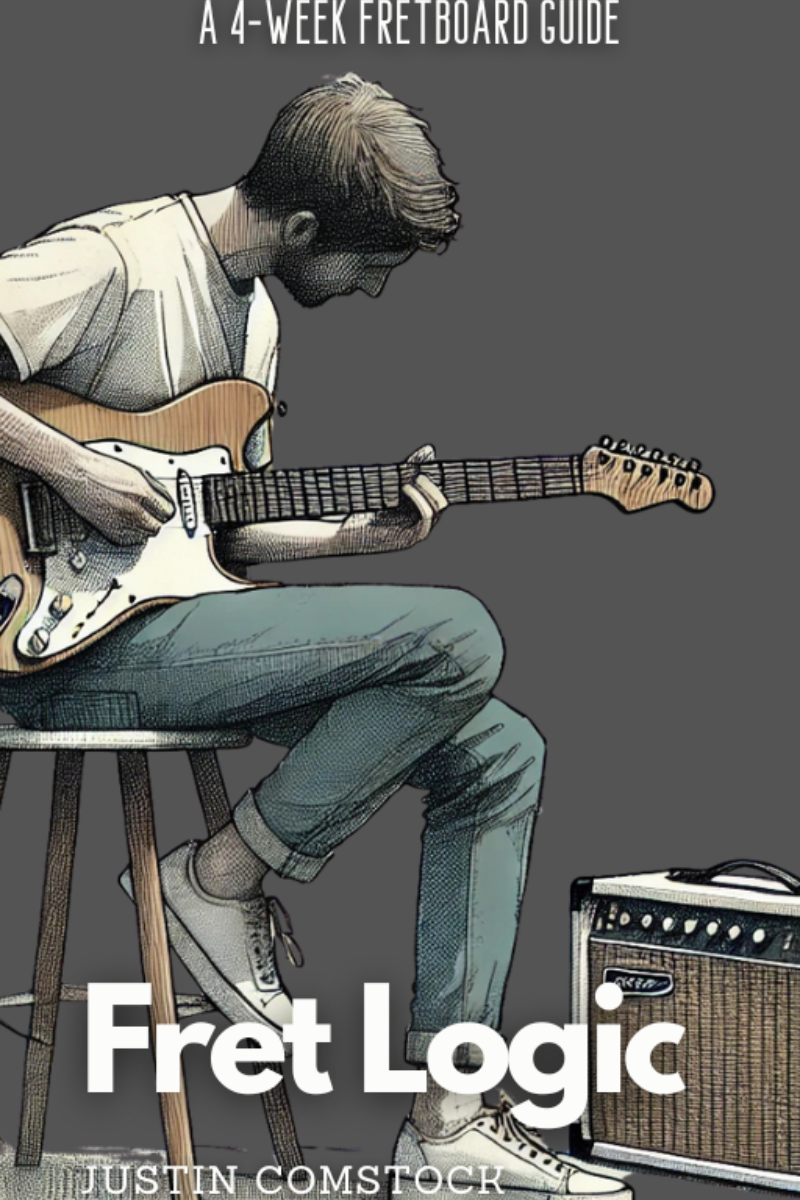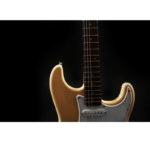Guitar Chords in C: Unlock the Key That Started It All
Learn the Most Useful Chords, Create Smooth Progressions, and Map Your Way Around the Neck
If you’re just starting your guitar journey or circling back to basics to rebuild with purpose, the C major key is one of the most important places to hang your musical hat.
Why?
Because it’s the key of zero sharps and zero flats. It’s pure. Clean. Familiar. And once you learn the guitar chords in C, a lot of musical doors begin to open—folk, blues, pop, singer-songwriter, gospel. Even jazz.
In this guide, you’ll learn:
✔ The essential guitar chords in the key of C
✔ How to build progressions that sound pro (not robotic)
✔ Why knowing chord shapes isn’t enough—you need to map them
✔ Creative fretboard practice prompts from the FretDeck
✔ How to join our Discord and start applying this stuff today
Let’s get to work.

❌ Stop Guessing. Start Shredding.
If you’re still fumbling through scale patterns and box shapes… it’s costing you progress.
FretDeck™ is the no-fluff system that shows you exactly how to master the fretboard—fast. Early access.
⚡️ This isn’t for dabblers. It’s for players who want results.
👉 Click here to join the pre-launch now
Early access. Limited rewards. Don’t wait.
🎼 The Essential Guitar Chords in C Major
The C major scale contains the following notes:
C – D – E – F – G – A – B
From this scale, we build diatonic chords using stacked thirds. The resulting chords are:
| Scale Degree | Chord | Type |
|---|---|---|
| I | C major | Major |
| ii | D minor | Minor |
| iii | E minor | Minor |
| IV | F major | Major |
| V | G major | Major |
| vi | A minor | Minor |
| vii° | B dim | Diminished |
🧠 But here’s where it gets creative…
Don’t just memorize these chords. Internalize them.
Let them become part of your muscle memory by using chord mapping exercises—something we teach inside the FretDeck system and cover in depth below.
🔑 Open Chord Shapes in C Major
Let’s walk through the open position chord shapes you’ll need.
C Major
The classic. Index on 1st fret B string, middle on 2nd fret D string, ring on 3rd fret A string.
D Minor
A dramatic little shape—triangular and tight. Start on the 1st fret of the high E string.
E Minor
One of the easiest shapes—two fingers. Open and warm.
F Major
Tough at first. This barre-style shape often discourages beginners. Try the mini F instead (just 4 strings).
G Major
Big, bold, and bright. Use the 2–1–0–0–0–3 or 3–2–0–0–3–3 variation.
A Minor
A go-to emotional chord. The sad cousin of C major. Learn it well.
B Diminished
Rarely played in open position. We’ll use B° in theory and later learn how to use triad voicings for this one.
🎶 Common Chord Progressions in C Major
Now let’s plug these into real music.
🔁 I – IV – V (C – F – G)
The foundation of 100,000 songs. Johnny Cash. Taylor Swift. Gospel hymns. Classic rock. All in here.
🔁 I – vi – IV – V (C – Am – F – G)
The “50s progression.” Think Elvis, doo-wop, and ballads.
🔁 vi – IV – I – V (Am – F – C – G)
The axis of awesome progression—used in thousands of hits from the ’90s to today.
🔁 ii – V – I (Dm – G – C)
A jazz staple. Learn to swing this one and you’ll start hearing it everywhere.
🧭 Map Your Chords Across the Neck
Here’s where most guitar blogs stop—but this is where yours begins.
Most players learn chords in open position and get stuck there. But C major chords exist all over the neck—in triads, barre shapes, CAGED forms, and inversions.
Let’s unlock a few ideas to help you map the neck using the chords in C major.
🃏 Use the Circle of 4ths to Map Chords
Just like you can use the Circle of 4ths to map notes (C → F → Bb → Eb…), you can also use it to move chord shapes.
Start with a C major chord on the 3rd fret A string. Move to F on the 8th fret A string. Then Bb, then Eb, and so on.
Keep the same chord shape. Just move it around.
This rewires your brain. It’s not just about “learning chords”—it’s about knowing where they live.
💡 Guitar Freaks Practice Prompt:
Take one chord from C major (say, A minor), and play it in three different shapes:
- Open position
- Barre shape rooted on 6th string
- Triad on the top 3 strings
Do this with all seven chords in C major. Now you’re not memorizing chords—you’re becoming fluent.
📌 You can find 52 of these prompts inside the FretDeck Practice Cards.
🎯 The B String Shift (Read This Twice)
Let’s talk about the weird tuning quirk on the guitar:
Every string is tuned a perfect fourth apart, except between the G and B strings, which is a major 3rd.
That means when mapping chords or intervals across the B string, you’ll need to adjust by one fret. This matters when you’re stacking triads or playing chord inversions.
If you’re wondering why things suddenly sound off—blame the B string.
🧠 Memorization Hack:
Anytime your interval crosses the B string, move it up one fret.
👁️ Visualization and Mind Mapping
If you want to master the guitar chords in C, you must visualize them.
That means:
- Seeing the C major scale notes on the fretboard
- Knowing where every root note of C, F, G, A minor, etc., lives
- Being able to close your eyes and “see” the chord shape in your mind
This isn’t a fantasy. It’s the skill of great players. And it’s one of the reasons we built FretDeck.
✨ Join the Movement: Master the Fretboard with FretDeck
Still getting lost on the neck every time you switch keys?
That used to be me—until I built a system to learn chords, scales, and intervals by shape and sound.
The FretDeck Kickstarter is live. Back it now and get:
- Physical decks for chords, scales, and triads
- Practice prompts like the ones above
- Lifetime access to our Discord practice hangout
🎯 Join the Kickstarter »
🧑🎸 Join Guitar Freaks Hangout »
📖 Read more lessons on the blog »

❌ Stop Guessing. Start Shredding.
If you’re still fumbling through scale patterns and box shapes… it’s costing you progress.
FretDeck™ is the no-fluff system that shows you exactly how to master the fretboard—fast. Early access.
⚡️ This isn’t for dabblers. It’s for players who want results.
👉 Click here to join the pre-launch now
Early access. Limited rewards. Don’t wait.
✅ Final Recap: How to Master Guitar Chords in C
- Learn all 7 diatonic chords in C: C, Dm, Em, F, G, Am, B°
- Play them in open position, then as barre chords, then as triads
- Practice moving through the Circle of 4ths
- Watch for the B string tuning quirk
- Use visualization and fretboard mapping to go beyond basic memory
- Join our Kickstarter to get the full FretDeck method
Want More?
If you loved this post, here’s what to do next:
Read our full breakdown of the CAGED Guitar System
Download 27 free chord charts for every key here »
Check out our guide on Guitar Triads

Join Guitar Freaks Hangout on Discord! 🎸
Get Fret Logic FREE!
Join the Guitar Freaks Hangout Discord and get exclusive access to my entire e-book, Fret Logic! Master the fretboard and elevate your solos with this comprehensive guide.
👉 Don’t miss out—join now and download your free copy!










